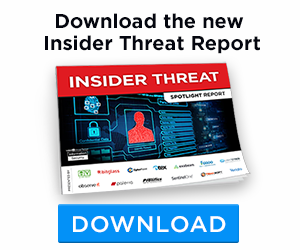

Have you heard of the Colonial Pipeline incident?
The cyberattack on the company caused widespread panic throughout the United States and disrupted operations for days.
Yes, one lapse on a spam email, one inadequate password, one abandoned account, or a malfunctioning asset can cause havoc.
In fact, in the cybersecurity world, you can’t protect something if you have no idea where the threat exists.
As a result, asset management has become an essential part of the base of cybersecurity processes in all sorts of businesses.
IT asset management aka ITAM counts among the key components of a vigilant, full-fledged security strategy — because it allows your security staff to retain a real-time database of IT assets and the related attack vectors.
Let us now see how you can make the best use of ITAM to minimize cyber attacks.
9 ways through which ITAM can decrease cybersecurity threats
Here is a rundown of the benefits of an asset management software in cutting down cyber-related threats.
-
Identify assets and their associated risks
The best asset management software sets up a stock of your organization’s assets, phases of their entire life cycles, most recent software upgrades, the risks they could face, and the approaches to ensure their security.
Hackers, for instance, are widely recognized for using phishing emails plus social engineering techniques to acquire access to classified data. IoT devices could be used like botnets so as to execute DDoS attacks.
An ITAM system assists IT teams in keeping a record of both physical and virtual assets and monitoring their condition in real-time.
Ambiguity about cyber security threats, legal responsibilities, and unexpected events is exacerbated for IT security professionals who don’t understand where resources are positioned, how well they are handled, or whether they are susceptible.
ITAM depicts those IT assets, which are being utilized in the widespread operating conditions. Admins can reduce security risks associated with unidentified, forgotten, or malfunctioning IT assets when IT possessions are tracked.
-
Handle the threats’ possible risks
IT asset management mitigates the unidentified unpredictability associated with cyber attacks. ITAM aids in the definition of an entity’s intent and the challenges it can encounter.
For instance, an asset designed to store the bank details of its clients will involve a higher security level as compared to the firm’s attendance monitoring system.
Security personnel gain a deeper insight of the associated risks with a resource by linking its function to it.
For instance, the team of WhatsApp introduced a new browser extension from early this week to keep their app service users via web safe and secure.
-
Streamline the security measures for assets
In almost every situation, safety and comfort are frequently at odds. Creating a system more reliable frequently involves making it a little less user-friendly. Likewise, vice versa.
ITAM simplifies asset protection without sacrificing simplicity. For instance, prior to handling a gadget, the IT unit must thoroughly examine its security features.
The IT division can rapidly categorize a new technology or software and approve it for usage by utilizing an ITAM platform.
ITAM would also make sure that the resources adhere to ITAM’s security protocols. This will, for instance, guarantee that gadgets are not linked to unsecure network systems and that files are not made accessible without approval.
It aids in the enforcement of IT security practices when dealing with cyber assets.
-
Respond fast to incidents via IT experts
As you might expect, developing a specific strategy leads to quicker response times in the event of an incident.
A data security ITAM enables your IT security staff to react immediately, contain the consequences of a violation or bypass, and minimize their impact.
However, please note that you will need a hands-on, expert team of IT professionals and QA engineers who have the right know-how of implementing ITAM in the organization.
It’s a good idea to evaluate the skills of your hires via assessments like a comprehensive test for hiring QA engineers. You can also involve professionals from various other departments – to create a toll that operates in all divisions.
Again, in the event of a problem, contemporary ITAM solutions can even optimize the reactions via automated solutions.
For instance, if anybody tries to enter an asset outside of the company firewall, ITAM can issue a notification and initiate the incident’s automatic message.
-
Control the cost and reporting of software assets
Organizations that know how much software they possess can recapture unutilized apps and reassign it, avoiding the need to purchase a new license for the suggested software.
Handling an excessive number of software apps raises the cyber-related risks associated with outdated or unpatched software.
Companies are able to better oversee software demands and investments with appropriate IT asset management.
ITAM can help security professionals enhance the precision of their reports. Take into account to use your IT asset management dataset as an arbiter of facts to ensure that every asset has already been recorded and installed with the necessary security control mechanisms.
Ignored assets may not receive the necessary security controls, posing a potential threat to the system.
-
Ensure that software and hardware are updated
Older editions of software as well as applications which have not been properly rectified, can pose a cybersecurity risk to a company.
ITAM keeps track of assets in the producing phase as well as resources in storage. IT supervisors can ensure that all IT resources are tallied and installed with the adequate tools to ensure that software applications are up to date alongside complete and accurate inventory data.
Unauthorized or unidentified IT resources can put the network’s security at risk. ITAM, in conjunction with network detection mechanisms, will enable IT admins to see all network-connected gadgets.
Supervisors can place verifications in place in order to ensure that resources are able to comply with security protocols and upgrades when they recognise what is trying to connect to the system.
Assets which do not connect to a network for a longer length of time also can pose a threat. Managers can be alerted by ITAM when an asset fails to notify into the system, enabling someone to to probe into missing resources which have been seized or misplaced.
Missing IT software having sensitive data might become a huge embarrassment for an organization, in addition to unforeseen legal expenses or fines.
-
Map software assets
Administrators can use ITAM to record the intent of an IT resource. ITAM services can link IT assets to tasks or IT services, giving security managers the details they need to safeguard each asset correctly.
Servers bought for a testing phase, for instance, may necessitate security measures that vary considerably from servers acquired to offer online services within a live setting.
ITAM will indicate on which software bundles the company has certified, as well as what an application is doing for the organization.
IT admins can refrain from buying duplicated software by mapping software names to software resources. Decreasing the number of software products that IT must support reduces cybersecurity risks.
-
Categorize IT assets
Inside an IT climate, not all resources are created equal. ITAM could indeed classify IT assets based on their integrated process.
For instance, an IT asset characterized as crucial to IT operations might be connected with a system component, then controlled in a central repository via configuration management procedures to improve the overall workflow.
It will report if any modifications, upgrades, or revisions are authorized and booked by using a change management process.
IT assets containing confidential or sensitive details should be classified appropriately to make sure that they are securely stored and, if disrupted, delegated to the right incident-response approach with the correct level of intensity.
Whenever IT assets classified information are properly labeled, they can be allotted to applicable disposal procedures and guidelines so that data is adequately discarded from a system.
-
Track non-conventional assets
Non-conventional IT gadgets, including the Internet of Things (IoT), keep flooding the infrastructure.
IT admins must record all equipment, both conventional and non-traditional, in order to successfully analyze the potential threat.
Even though the security risks involved with a smart headlight may appear to be minor, the technology that regulates the same can be vulnerable to hacking if not secured properly.
ITAM makes non-traditional IT gadgets accessible to security officers, guaranteeing that all machines, like IoT equipment and supporting tools, are fully secure and up to date with the most recent safety and software updates.
Conclusion
To fully deliver on its guarantee, information security and IT asset management necessitates the integration of a series of functions.
Businesses need to be able to classify, evaluate, and resolve the cyber security threats posed by all kinds of tools and assets, while also taking assertive actions to safeguard their equipment, systems, and information.
They should also detect and track resources instantaneously, perform constant risk assessment, as well as immediately isolate untrustworthy resources from the entire network.



















